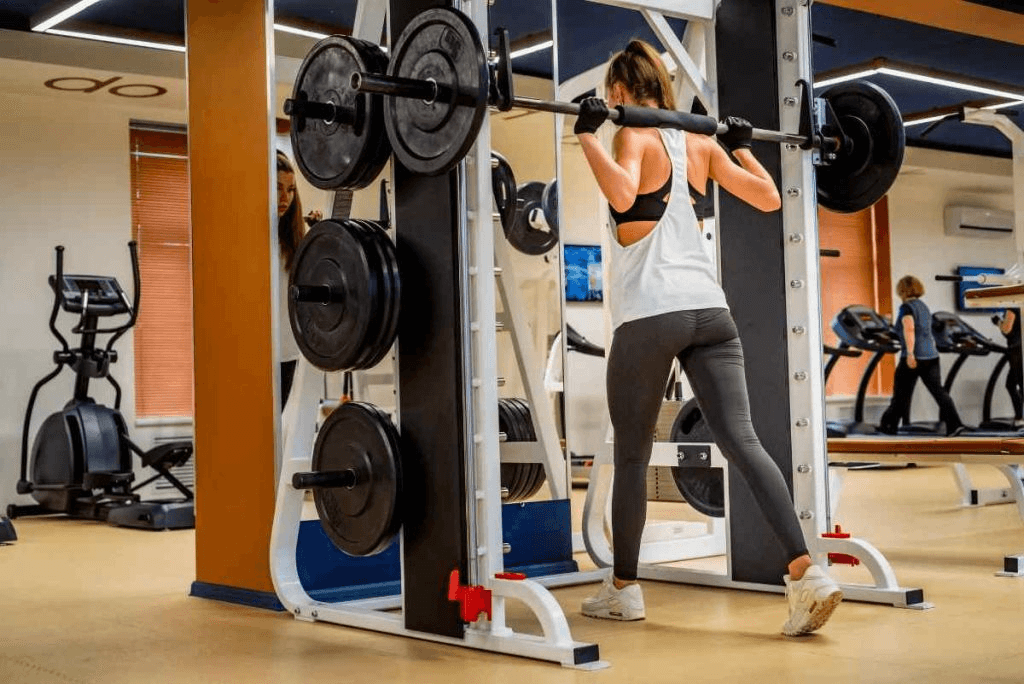A 5-day workout schedule is a popular choice for many fitness enthusiasts. It allows you to target different muscle groups throughout the week while providing ample time for recovery. Whether you’re looking to build muscle, lose weight, or improve your overall fitness, structuring your week effectively can help you achieve your goals faster.
In this article, we’ll break down a balanced 5-day workout schedule that incorporates strength training, cardiovascular work, and flexibility training, ensuring you’re hitting all key components of fitness.
Day 1: Chest and Triceps - Push Day
Starting the week strong, a chest and triceps workout is focused on compound movements that target the upper body’s pushing muscles. Here's a sample routine:
- Bench Press (Flat or Incline) – 4 sets of 6-8 reps
- Dumbbell Chest Press – 3 sets of 8-10 reps
- Push-Ups – 3 sets to failure
- Triceps Dips – 3 sets of 8-10 reps
- Skull Crushers – 3 sets of 10-12 reps
This workout emphasizes pushing movements that build strength and muscle in the chest, shoulders, and triceps. Bench press variations, in particular, are key for chest development, while triceps dips and skull crushers will target the back of the arms.
Day 2: Back and Biceps - Pull Day
On day two, it's time to focus on your pulling muscles—your back and biceps. These muscles play a critical role in posture, strength, and overall athleticism.
- Deadlift – 4 sets of 5-8 reps
- Pull-Ups (or Lat Pulldown) – 3 sets of 8-10 reps
- Bent-Over Barbell Row – 3 sets of 8-10 reps
- Barbell or Dumbbell Bicep Curl – 3 sets of 10-12 reps
- Hammer Curls – 3 sets of 10-12 reps
Deadlifts are one of the most effective compound exercises for overall strength, while pull-ups and rows specifically work the back. For your biceps, curls and hammer curls ensure full arm development.
Day 3: Legs and Abs - Lower Body Focus
Leg day is crucial for building strength, power, and muscular endurance. Pair this with an ab workout to improve core strength.
- Squats (Back or Front) – 4 sets of 6-8 reps
- Leg Press – 3 sets of 8-10 reps
- Lunges – 3 sets of 10 reps per leg
- Leg Curls (Machine or Dumbbell) – 3 sets of 10-12 reps
- Calf Raises – 3 sets of 12-15 reps
- Plank – 3 sets, holding for 30-60 seconds
- Russian Twists – 3 sets of 15 reps per side
Squats and leg presses are excellent for targeting your quads, glutes, and hamstrings, while lunges help with unilateral leg strength. Adding calf raises ensures your lower legs don’t miss out, and abs exercises like planks and Russian twists are great for stabilizing your core.
Day 4: Shoulders and Traps - Upper Body Focus
Shoulder workouts build strength for your upper body and help you perform better in other lifts. This day is also a great opportunity to work on your traps and upper back.
- Overhead Shoulder Press (Barbell or Dumbbell) – 4 sets of 6-8 reps
- Lateral Raises – 3 sets of 10-12 reps
- Front Raises – 3 sets of 10-12 reps
- Face Pulls – 3 sets of 12-15 reps
- Shrugs – 3 sets of 10-12 reps
The overhead press is one of the most important shoulder exercises for building overall size. Lateral and front raises target the medial and anterior deltoids. Face pulls are fantastic for rear deltoid development and improving posture, while shrugs focus on strengthening your traps.
Day 5: Full Body or Cardio - Active Recovery
A fifth day in your workout routine can be an opportunity for full-body conditioning or active recovery, depending on your needs and goals.
- Circuit Training – 3 rounds of 10-12 exercises, focusing on full-body movements like burpees, kettlebell swings, push-ups, and squats.
- HIIT (High-Intensity Interval Training) – 20-30 minutes of intervals between sprints and low-intensity recovery.
- Yoga or Stretching – 30 minutes of full-body stretching to improve flexibility and aid recovery.
If you’re looking to improve endurance or fat loss, HIIT or circuit training is an excellent choice. Alternatively, a full-body yoga session can help with flexibility, balance, and mental recovery.
Why a 5-Day Workout Schedule Works
A 5-day workout schedule offers a perfect balance between intensity and recovery. By splitting up muscle groups, you’re allowing specific areas to recover while still maintaining a rigorous workout regimen. This approach helps:
- Muscle Recovery: With a day dedicated to each muscle group, recovery is optimized, allowing muscles time to repair and grow.
- Consistent Progress: With frequent training, your body becomes accustomed to regular exercise, leading to faster strength gains and endurance improvements.
- Flexibility: A 5-day workout schedule allows you to tailor your workouts according to your goals—whether that’s strength, size, or fat loss.
Tips for Success
- Warm-Up and Cool Down: Always start with a dynamic warm-up to prepare your muscles, and finish with static stretching to improve flexibility and reduce muscle soreness.
- Nutrition Matters: Proper nutrition is crucial for muscle growth and recovery. Ensure you’re getting enough protein, healthy fats, and complex carbs.
- Rest and Sleep: Make sure you're getting enough sleep each night. Aim for at least 7-9 hours to allow your body to repair and grow.
- Adjust as Needed: If a specific muscle group feels fatigued, don’t hesitate to switch up your routine to avoid overtraining.
Conclusion
A well-structured 5-day workout schedule can bring you closer to your fitness goals by providing variety and focus in your training. Whether you’re looking to build muscle, improve cardiovascular health, or increase overall strength, this type of split gives you the flexibility to train hard while ensuring recovery for optimal results. Be consistent, listen to your body, and enjoy the process of building a stronger, healthier version of yourself!











































Leave a comment
This site is protected by hCaptcha and the hCaptcha Privacy Policy and Terms of Service apply.